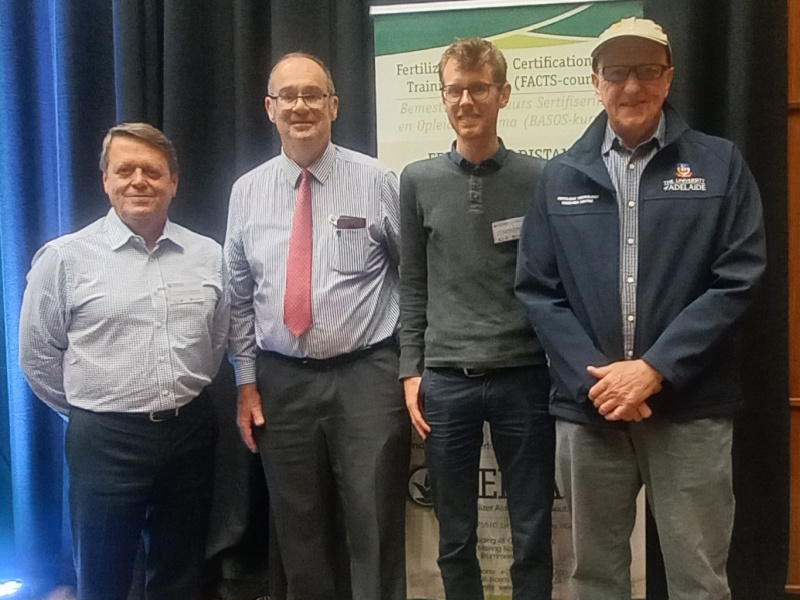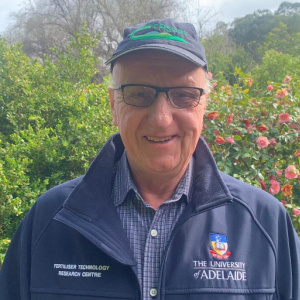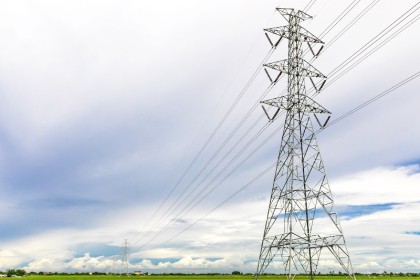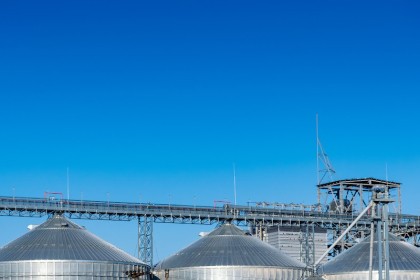
Synopsis Of The 2023 Fertasa Soil Fertility And Plant Nutrition Symposium
The topic of the symposium was “Plant Nutrition: New Dimensions in Technological and Agronomical Advances.”
Professor Patrick Brown gave an in-depth presentation dealing with the role of microbial and non-microbial biostimulants in the growth of crops. He stressed that these products are there to enhance natural processes in plants to adapt to different conditions.
Do these products work?
- Many of them don’t, but some are extremely valuable.
- Biostimulants are designed to solve a particular stress condition or to enhance the uptake of nutrients
- What stress are you concerned about
- What nutrients are you attempting to enhance
- Biostimulants have many different functions and many different origins – There are no common rules to explain them all
- Aspirin might help your headache, but it won't help your diabetes
- Knowledge of the agronomy of your crop and some plant biology and soil science will help you make sound decisions.
Testing biostimulants is very difficult and many ‘results’ cannot be trusted and may not be relevant to your crop. (Use rules 1-4). Some biostimulants are remarkable and this is a field of great promise!!
Two prominent theories exist:
Stress Mitigation: Agricultural Crops frequently do not achieve full yield potential due to environmental stress events.
-
- Biostimulants can help overcome prepare the plant for these stresses
- Biostimulants improve stress tolerance and minimize crop yield loss
Nutrient Uptake: The efficiency of nutrient use in most agricultural systems is low and deficiencies are common
-
- Biostimulants act to increase the availability of soil nutrients
- Biostimulants increase plant nutrient use efficiency
Stress Hypothesis (includes nutrient stress/nutrient efficiency)
Abiotic ‘stress’ occurs in all environments and as a consequence yield rarely reaches full potential (abiotic stress = nutrients, drought, temperature, frost, deficiency, salinity, toxicity….
Biostimulants influence cropping system resilience by..
-
- Enable plants to more effectively tolerate stress
- Utilize nutrients and water efficiently
Favorably alter the plant microbiome ...
There are now hundreds of papers demonstrating positive responses of biostimulants on plant stress and yield. Only a few have a clear biological explanation, most do not.
Plant Perception and Response to Stress occurs through Signaling and Plant Growth Regulation. Many biostimulants have been shown to affect plant stress signaling and regulatory pathways. Professor Brown discussed many different effects and actions which should be read on the Fertasa website http://www.fertasa.co.za/fertasa-events/symposium/
Doctor Koos Bornman gave a comprehensive overview of the importance of Boron in Agriculture.
The influence of boron deficiency on various crops are outlined in detail from scientific trials.
Visit the Fertasa to gain full insight in this excellent treatise .http://www.fertasa.co.za/fertasa-events/symposium/
Professor Michael Maclaughlin discussed novel fertilizers with common key objectives:
- Improve nutrient acquisition by plants
- Reduce non-productive losses of nutrients to the atmosphere or waters
- Reduce long-term storage of nutrients in soil
- Improve human and/or animal nutrition
- Reduce nutrient cost
- Simplify fertilizer manufacturing
- Reduce energy use or waste emissions during fertilizer manufacturing
- Some nutrients are easily lost to the atmosphere – e.g. nitrogen (N)
- Some nutrients can be “tied up” or stored in soils – phosphorus (P), copper (Cu), manganese (Mn), zinc (Zn)
- Some nutrients are easily leached from soils
- Acidic soils – N, sulfur (S), boron (B) and sometimes calcium (Ca)/magnesium (Mg)
Alkaline soils - N, S, molybdenum (Mo) and selenium (Se)
Professor MacLaughlin discussed various methods to improve P S B and Zn availability and uptake. Visit the Fertasa website for the detail. http://www.fertasa.co.za/fertasa-events/symposium/
Professor Maarten Everaert discussed Layered Double Hydroxides (LDH) for Circular Phosphorus use in Agriculture
= Inorganic anion exchange materials: divalent (Mg2+) and trivalent (Al3+) metal hydroxide layers and a negatively charged anion interlayer
- Structurally relates to brucite Mg(OH)2
- Introduction of trivalent cations (Al3+)
→ positively charged layers
→ anion exchange capacity
→ exchangeable anions in interlayer
- LDH have a high affinity for PO4 anions
→ adsorbent for PO4
→ P desorption and reuse of LDHs questionable
LDHs for circular P use in agriculture
The following were discussed
- Release mechanisms of P from LDH, the effectiveness of powdered LDH as fertilizer
- LDH application form determines the slow-release character of P-LDH
- P-LDHs and limiting P losses to the environment
The following conclusions were arrived at:
- P release from LDH by anion exchange (pH neutral, alkaline) or LDH dissolution (acid)
- Powdered LDH is a relatively fast-working fertilizer, with good effectiveness in calcareous soils and less strongly P-fixing soils
- Granulation of LDH à slow-release fertilizer
- Slow release of P from LDH does not increase P uptake in strongly P-fixing soils
à In acid-weathered soils, a local P saturation is required: granular soluble P
- Slow-release P fertilizers are a tool to limit losses of P to the environment
- Visit the Fertasa website for the full detail on this intriguing technology. http://www.fertasa.co.za/fertasa-events/symposium/
Doctor Pauline Welikhe discussed the application principles of Artificial Intelligence in the modelling of P input-output relationships in complex Agricultural systems to minimize P loss from the soil and eutrophication of water sources. Visit the Fertasa Website for all the insights in this project http://www.fertasa.co.za/fertasa-events/symposium/
Annemarie van der Merwe discussed findings regarding nitrogen use efficiency in the Western Cape. The focus was on regenerative agriculture involving four systems: Canola Wheat, Lupine Wheat, Medics Wheat and Lucerne Wheat.
Visit the Fertasa website for the influence of these practices to optimize the 4R principles. http://www.fertasa.co.za/fertasa-events/symposium/

Annemarie van der Merwe

Dr Koos Bornman

Dr Pauline Welikhe

Prof Maarten Everaert

Prof Michael McLaughlin

Prof Patrick Brown












